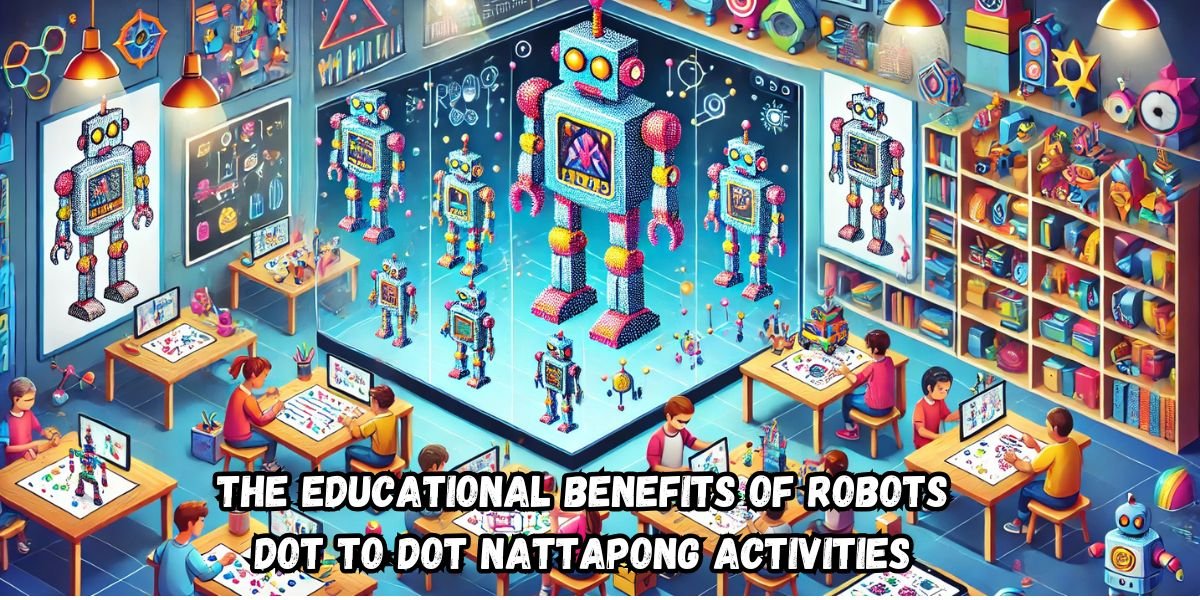In the modern educational landscape, innovative tools and methods have become crucial for engaging learners and fostering critical thinking. One such activity, Robots Dot to Dot Nattapong, bridges creativity and logic in an interactive way that captivates participants of all ages. By combining traditional dot-to-dot puzzles with robotics-themed designs, these activities provide an enriching platform for cognitive development and problem-solving skills.
What Are Robots Dot to Dot Nattapong Activities?
Robots Dot to Dot Nattapong activities involve connecting numbered dots to form intricate robot designs. Unlike conventional dot-to-dot puzzles, this series incorporates detailed and futuristic robotic illustrations, enhancing visual appeal and intellectual engagement. These activities are tailored to challenge participants while making learning fun and rewarding.
The Cognitive Advantages of Robots Dot to Dot Nattapong
1. Enhancing Fine Motor Skills
Connecting dots requires precise hand movements, improving fine motor skills and hand-eye coordination. These activities are particularly beneficial for younger children developing foundational motor abilities and for adults seeking therapeutic exercises.
2. Boosting Visual-Spatial Intelligence
By analyzing how the dots align to create complex shapes, participants sharpen their visual-spatial intelligence. This skill is vital in disciplines like engineering, architecture, and programming—fields that often intersect with robotics.
3. Encouraging Logical Thinking
Each dot in the sequence represents a step toward completing the larger picture. Following this logical progression fosters problem-solving abilities, reinforcing the importance of order and sequence in achieving goals.
4. Promoting Creativity
Although the activity involves a structured process, it leaves room for creative expression. Participants can customize their robotic designs with colors, patterns, and additional features, blending logic with artistic flair.
Read Also: Twstalker Review: The Ultimate Tool for Twitter Analytics and Trends
The Role of Robotics in Modern Education
Robotics is rapidly becoming a cornerstone of 21st-century learning. Activities like Robots Dot to Dot Nattapong introduce participants to the world of robotics in a non-intimidating way. By associating robotics with fun, these activities demystify technology and inspire interest in STEM (Science, Technology, Engineering, and Mathematics) subjects.
How Robots Dot to Dot Nattapong Enhances STEM Learning
1. Building a Foundation for Coding
Although seemingly simple, the act of connecting dots mirrors the logic required in coding. Participants learn to identify patterns, follow sequences, and think critically—all essential skills for programming.
2. Understanding Geometric Concepts
As participants draw lines between dots, they inadvertently explore geometric concepts such as angles, symmetry, and proportion. This understanding forms the basis for advanced mathematical studies.
3. Sparking Interest in Robotics
Completing a robotic design can ignite curiosity about how robots work. This natural interest often leads participants to explore more complex robotics projects, encouraging lifelong learning.
Applications of Robots Dot to Dot Nattapong in Educational Settings
1. Classroom Activities
Teachers can incorporate these puzzles into lesson plans to make learning more engaging. For example, they can use them to introduce topics like robotics, geometry, or logical reasoning.
2. After-School Programs
Robotics clubs and STEM-focused programs can use Robots Dot to Dot Nattapong as an introductory activity, creating a relaxed yet stimulating environment for participants to explore technology.
3. Therapeutic Use
These activities are also ideal for therapeutic settings, helping individuals improve focus, reduce anxiety, and develop motor skills.
Read Also: SportsGuruPro Spin Win Daily: Your Guide to Winning Big Every Day
How to Make Robots Dot to Dot Nattapong Activities More Engaging
1. Incorporate Augmented Reality (AR)
Using AR technology, completed designs can be brought to life on a screen, showing animations of the robot in action. This addition enhances engagement and provides a multi-dimensional learning experience.
2. Introduce Competitions
Organizing friendly competitions where participants race to complete designs fosters teamwork and adds a layer of excitement. Offering small prizes for creativity or speed can motivate learners further.
3. Combine with Storytelling
Pairing the puzzles with storytelling elements—such as narratives about the robots—makes the activity more immersive. Participants can imagine their robots as characters in a larger story.
Read Also: Will Listerine kill tooth pain nerve?
DIY Robots Dot to Dot Nattapong: Creating Your Own Puzzles
Creating personalized Robots Dot to Dot Nattapong activities is simple and rewarding. Here’s how you can do it:
- Choose a Robotic Design: Sketch a basic robot figure on paper or digitally.
- Mark Key Points: Identify significant features (e.g., head, arms, joints) and assign numbered dots.
- Create Guidelines: Ensure the dots form a logical sequence to maintain clarity.
- Test the Puzzle: Solve it yourself or have someone test it to ensure accuracy.
- Add Customization Options: Provide suggestions for coloring or expanding the design.
Read Also: The Ultimate Exploration of Coomer Su: Insights You Need to Know
Conclusion: A Fun Path to Learning
Robots Dot to Dot Nattapong activities are more than just puzzles; they are powerful tools for education, creativity, and engagement. By blending traditional learning methods with robotics-inspired designs, these activities prepare participants for a future driven by technology. From enhancing fine motor skills to sparking an interest in STEM, their benefits are multifaceted and far-reaching.














